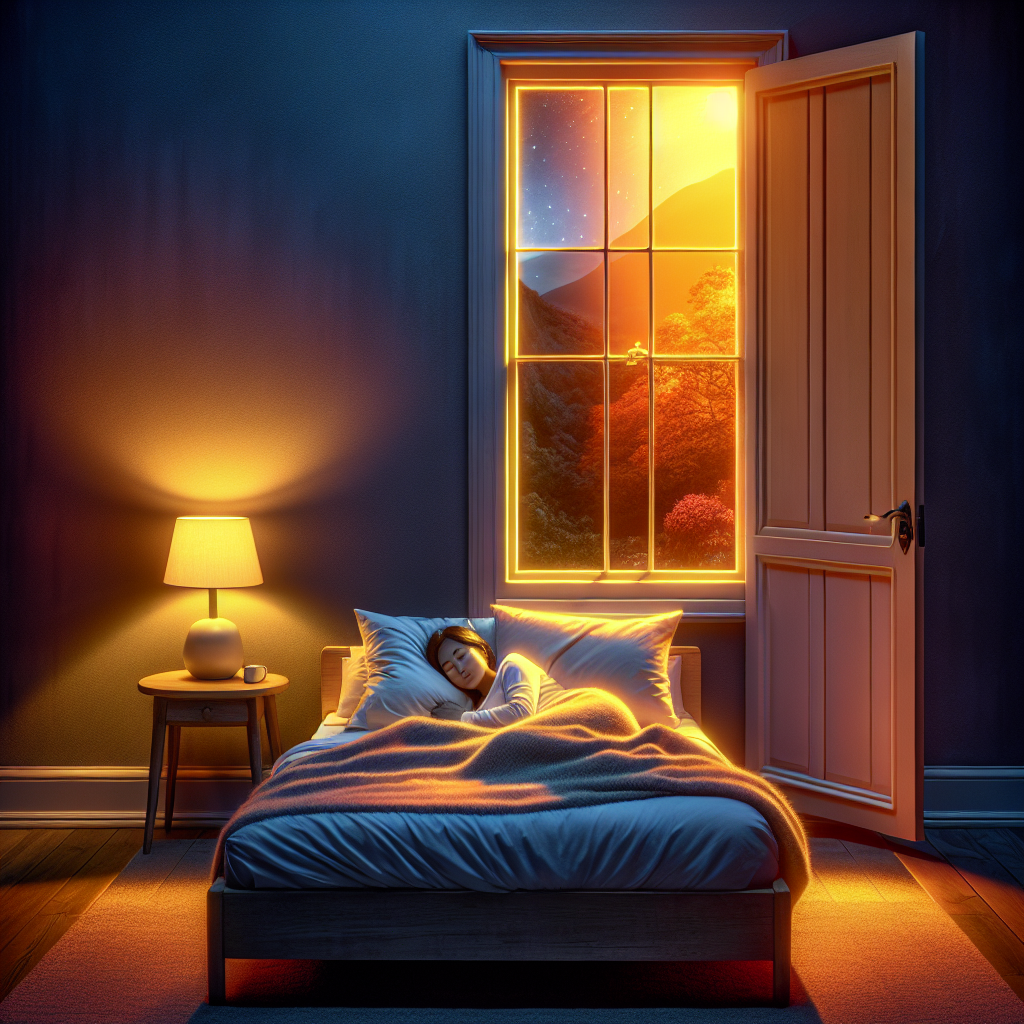
The Sound of Science: Light’s Spectrum and Its Effects on Sleep
Understanding the Connection Between Light and Sleep
In today’s digital age, where screens illuminate our everyday lives, the role of light in influencing our sleep patterns has garnered increased attention. The NIU STEAM team delves into this fascinating topic as part of their Sound of Science series on WNIJ, aiming to unravel the mysteries of how various types of light can affect our sleep-wake cycles.
How Light Affects Sleep Patterns
Mike from Naperville presents a compelling query inquiring about the effects of different types of light, specifically blue light, on sleep. Understanding these effects is particularly relevant as November marks “National Sleep Comfort Month.”
The key to deciphering light’s impact lies in understanding melatonin, a hormone produced by a small endocrine gland in the brain. This gland responds directly to light exposure, increasing melatonin production as night falls and signaling our bodies that it’s time to rest. Conversely, the light of dawn triggers a decrease in melatonin, helping us wake up.
The Role of Light Wavelengths
Light comes in various wavelengths, each affecting us differently. Visible light includes a spectrum from red (longest wavelength) to violet (shortest wavelength). Blue, indigo, and violet lights emit the most energy, and their influence is significant due to their high energy emission.
Modern technology has intensified exposure to these high-energy lights. Computer screens, tablets, cell phones, and LED bulbs all emit artificial blue light, often tricking our brains into perceiving it as daytime even during the night hours.
Impact of Screen Time
The ever-increasing screen time poses challenges to our natural sleep patterns. Research recognizes that screen time has climbed to over 13 hours per day, significantly disrupting natural sleep-wake cycles. Consistent exposure to blue light, especially before bed, confuses the brain’s melatonin signals, inhibiting the body’s preparation for sleep.
Practical Solutions for Improved Sleep
Thankfully, there are practical strategies to counter blue light’s impact:
- Gradually decrease blue-light exposure: Reducing exposure 2-3 hours before bedtime can recalibrate the body’s natural melatonin production.
- Eliminate blue light an hour before bed: Ensure a better night’s rest by ceasing blue light exposure altogether shortly before sleep.
- Incorporate longer-wavelength light: Studies suggest using yellow or orange tones, reminiscent of a sunset, can promote relaxation and prepare the body for sleep.
Exploring Additional Factors
While wavelength is crucial, other factors like timing, intensity, and duration of light exposure also influence melatonin and sleep routines. Being conscious of these exposure patterns can make a significant difference in maintaining healthy sleep cycles.
The Sound of Science Series
The Sound of Science is a collaborative effort between WNIJ and NIU STEAM, airing at 1:04 p.m. on Fridays leading into Science Friday. Hosted by engaging communicators Jasmine Higgins and Chrissy James, it takes listeners on a journey exploring various scientific phenomena, making critical topics accessible to a broader audience.
This episode emphasizes the significance of awareness when it comes to digital device usage and light exposure, providing insights and solutions to help maintain optimal sleep hygiene in today’s tech-driven society.
Stay Engaged with Science
For those eager to learn more about the interplay between science and daily life, The Sound of Science offers rich educational content. From the origins of Halloween to the exploration of Earth’s dual moons, each episode sheds light on intriguing queries raised by the public.
Listeners can keep up to date by subscribing via Spotify or tuning into their favorite episodes online. With support from community partners like Ken Spears Construction, this series continues to ignite curiosity and enhance understanding of science’s role in our world.
Join the Conversation
To actively engage with The Sound of Science, listeners are encouraged to submit their questions and topic suggestions. The NIU STEAM team values interaction, aiming to answer diverse inquiries that illuminate various science, technology, engineering, and math concepts through a sound-oriented lens.
Connect with WNIJ and NIU STEAM through their official social media platforms, where ongoing discussions and updates about upcoming episodes are shared. By fostering a community curious about the wonders of science, this series enriches our understanding and appreciation of how scientific discoveries impact our everyday lives.
Source: https://www.northernpublicradio.org/wnij-news/2024-11-15/the-sound-of-science-lights-spectrum-and-its-effects-on-sleep

